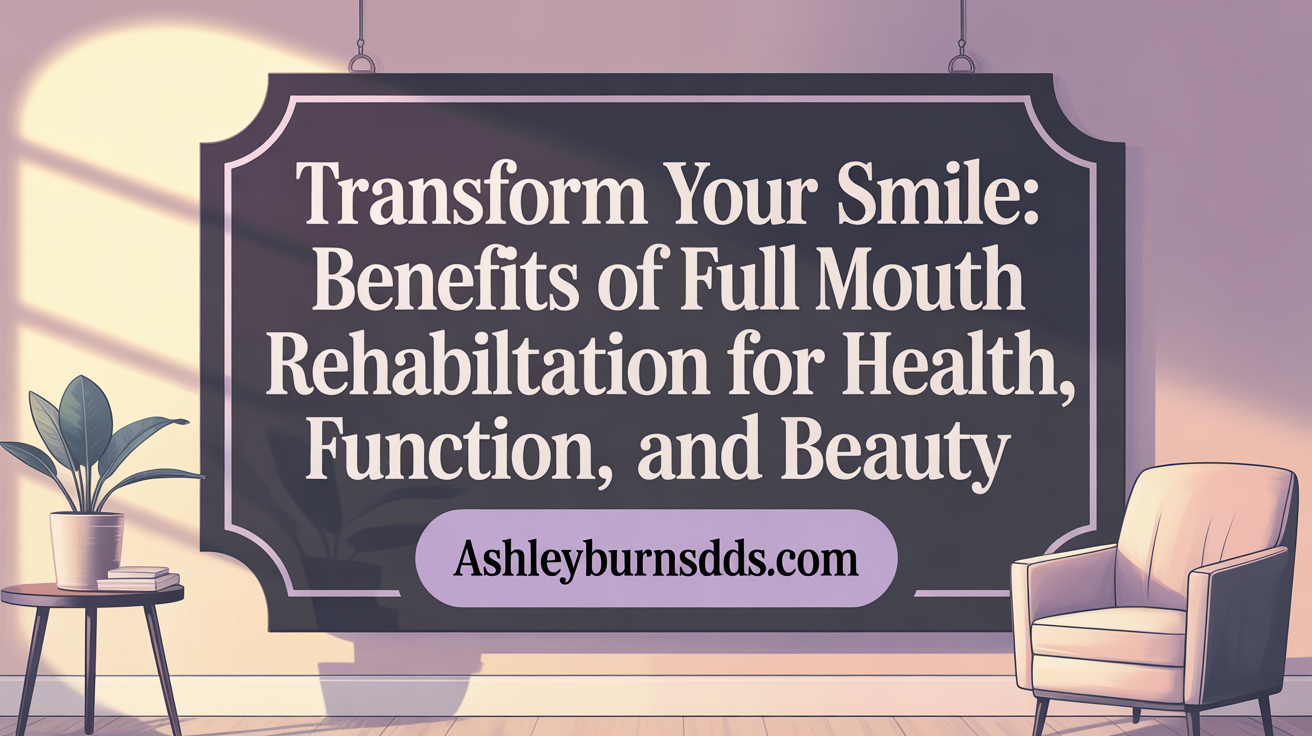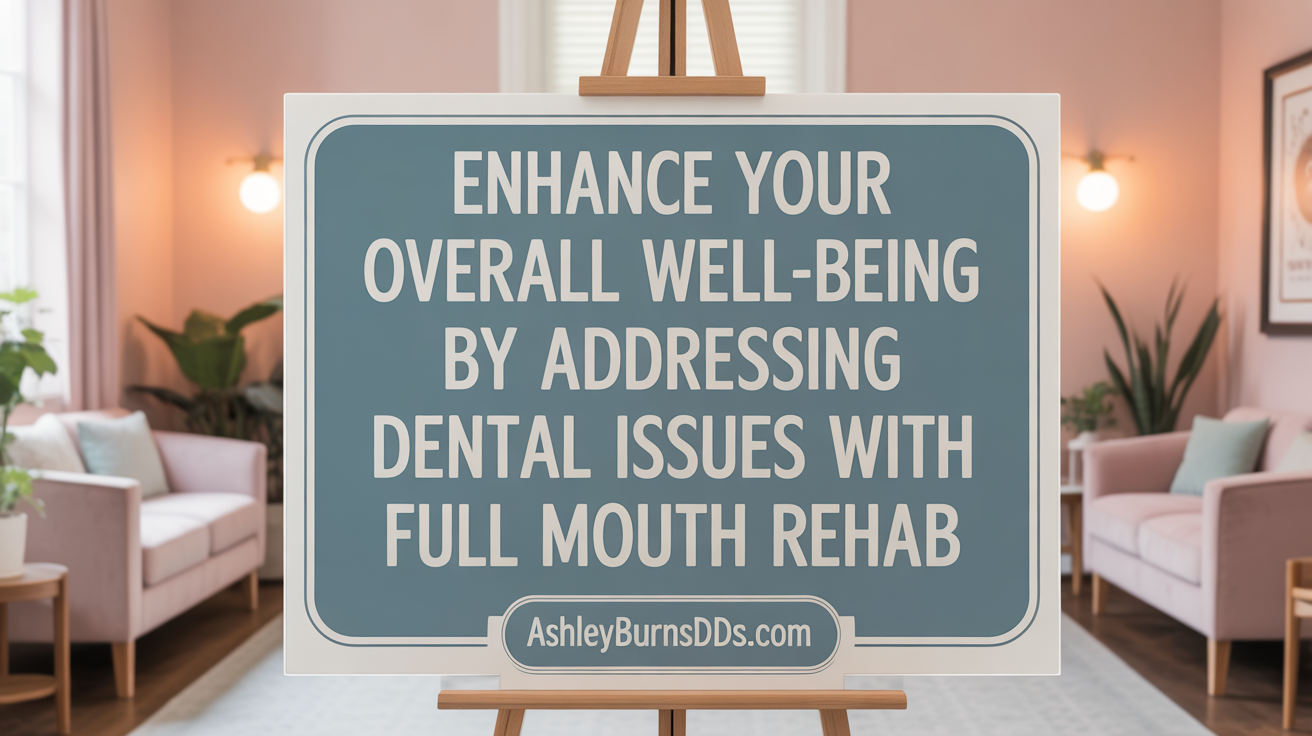Understanding Full Mouth Rehabilitation
Full mouth rehabilitation is a personalized dental treatment approach that addresses multiple dental challenges simultaneously, aiming to restore and enhance the health, function, and appearance of the entire mouth. This transformative procedure not only renews oral health but also revitalizes smiles and boosts self-confidence, offering patients a pathway to improved quality of life through advanced restorative and cosmetic dentistry.
What Is Full Mouth Rehabilitation and How Does It Benefit Oral Health, Functionality, and Aesthetics?

What is full mouth rehabilitation and what benefits does it offer for oral health, functionality, and aesthetics?
Full mouth rehabilitation is a comprehensive and personalized treatment approach aimed at restoring the health, function, and appearance of the entire mouth. It involves a combination of multiple dental procedures tailored to address complex issues such as missing teeth, severe decay, gum disease, bite misalignment, and damaged or worn enamel.
This extensive process may include restorative procedures like dental crowns, bridges, dental implants, veneers, as well as orthodontic treatments and periodontal therapy. The goal is to rebuild damaged teeth, replace missing ones, and correct bite issues, resulting in a healthier and more balanced oral structure.
The benefits are wide-ranging. Patients experience improved ability to chew and speak naturally, which is essential for daily life. It also helps prevent further dental problems by stabilizing the teeth and supporting gum health. Aesthetically, full mouth rehab can dramatically enhance smiles by correcting discolorations, misalignments, and gaps, boosting confidence and self-esteem.
Because each treatment plan is customized, it aligns with the individual’s specific needs, ensuring both functional and aesthetic goals are met. The long-term results include a stable, healthy mouth with better oral hygiene, less discomfort, and a more attractive appearance—improving overall quality of life.
Dental Procedures and the Integration of Cosmetic and Restorative Dentistry in Treatment
Full mouth rehabilitation includes a wide range of dental procedures designed to restore both the function and appearance of the entire oral cavity. These treatments encompass dental crowns, bridges, implants, veneers, orthodontics, periodontal therapy, and various forms of dentures. Each procedure is selected based on the patient's unique dental issues, such as decay, damage, missing teeth, misalignment, or gum disease.
Dental crowns and veneers are used to strengthen damaged teeth and improve their visual appeal, while bridges and implants replace missing teeth and support surrounding structures. Orthodontic treatments like braces or Invisalign help correct bite misalignments, ensuring proper function and aesthetics.
Modern materials and advanced technology play a vital role in these procedures. High-quality ceramics, composite resins, and biocompatible implants ensure durable and natural-looking results. Digital imaging, 3D scans, and computer-aided design facilitate precise planning and execution, leading to more predictable and efficient outcomes.
The success of full mouth rehabilitation depends heavily on collaboration among various dental specialists. Prosthodontists, periodontists, orthodontists, and oral surgeons work together to develop and implement a comprehensive treatment plan. This multidisciplinary approach allows for a tailored strategy that addresses individual needs holistically.
Personalization is fundamental. Treatment plans are customized to the patient’s specific dental conditions, aesthetic goals, and functional requirements. The process often involves multiple appointments over several months, with staged procedures that gradually rebuild the smile.
Overall, these combined efforts result in a healthier, more attractive smile that not only restores normal functions like chewing and speaking but also significantly boosts confidence and overall quality of life.
| Procedures Involved | Purpose | Technology & Materials | Collaborating Specialists |
|---|---|---|---|
| Crowns & Veneers | Strengthen teeth & aesthetic enhancement | Porcelain, composites, digital imaging | Prosthodontist, cosmetic dentist |
| Dental Implants | Replace missing teeth & maintain jawbone | Titanium, zirconia, 3D planning | Oral surgeon, implantologist |
| Bridges & Dentures | Fill gaps & restore chewing | Metal frameworks, acrylics | Prosthodontist, lab technicians |
| Orthodontics | Correct bite & alignment issues | Invisalign, braces, digital scans | Orthodontist |
| Periodontal Therapy | Treat gum disease & stabilize tissues | Laser therapy, grafts | Periodontist |
This highly customized and collaborative approach ensures a comprehensive restoration, promoting both oral health and aesthetic appeal in the final results.
Who Is a Candidate for Full Mouth Rehabilitation and What to Expect Throughout the Treatment Process

What criteria determine a patient's suitability for full mouth rehabilitation?
Patients suited for full mouth rehabilitation typically face extensive dental problems that cannot be effectively addressed with single procedures. These may include severe tooth decay, significant wear, fractures, missing teeth, or gum disease that compromise function and appearance. Good candidates usually experience difficulties in chewing, speaking, or smiling confidently. Their overall health and oral health status are important; they need to be able to tolerate the surgical and restorative procedures involved, and committed to maintaining good oral hygiene post-treatment.
Psychological readiness is also crucial. Patients should have realistic expectations about the outcomes and be motivated to follow through with the extensive treatment plan. A comprehensive evaluation involving clinical exams, digital imaging, and consultations with dental specialists helps determine if they are suitable for the process. This assessment considers factors such as jaw health, systemic health conditions, and the ability to undergo multiple procedures over the treatment timeline.
What is the typical process and timeline a patient can expect during full mouth rehabilitation treatment?
The journey begins with an initial consultation where the dentist reviews the patient’s oral health history, conducts physical examinations, and takes diagnostic images like X-rays and digital scans. This phase helps establish a customized treatment plan aligned with the patient's specific needs and aesthetic goals.
Preparatory treatments often include periodontal therapy for gum health, extractions for damaged teeth, or root canal treatments. Once the mouth is prepared, restorative procedures such as crowns, veneers, dental implants, or bridges are scheduled. The entire process usually takes several months—typically up to nine—due to necessary healing periods. For example, implants require time for osseointegration, which can take several months.
Throughout treatment, multiple appointments are scheduled for placement, adjustments, and follow-up care. Some procedures like veneer placement or crown fitting are completed in a few visits, whereas more complex interventions, like implant placement or orthodontics, extend the timeline.
Patients should anticipate recovery periods after each surgical step, during which maintaining oral hygiene and following post-op instructions are essential. Regular follow-ups ensure proper healing and optimal results. Overall, the process demands careful planning, coordination among specialists, and patience, but results in restored function, aesthetics, and confidence.
Transforming Smiles and Confidence: The Emotional and Psychological Benefits of Full Mouth Rehabilitation

How does full mouth rehabilitation improve a person's smile, appearance, and self-confidence?
Full mouth rehabilitation dramatically boosts a person's self-image by restoring both the look and function of their teeth. It addresses common aesthetic concerns such as missing, discolored, or misaligned teeth, creating a natural and attractive smile. This change not only makes individuals feel more confident about their appearance but also improves their facial structure, helping maintain a youthful look.
Functionally, the treatment improves biting, chewing, and speech, which can help reduce embarrassment in social situations. When people feel good about their smile and how they function, they tend to be more comfortable and confident in personal and professional interactions. Overall, the process enhances self-esteem and contributes to a positive self-image that can elevate wellbeing across all aspects of life.
What are the emotional and psychological benefits experienced by patients after full mouth rehabilitation?
Patients often experience profound emotional and mental improvements following full mouth reconstruction. Restoring a healthy, appealing smile can significantly diminish feelings of self-consciousness, reducing social anxiety and embarrassment.
The transformation fosters a sense of renewal and hope, empowering individuals to approach social interactions with confidence. It often results in a more optimistic outlook and reinforces positive personal identity.
Additionally, alleviating dental pain, discomfort, or functional issues decreases daily stress and related tension, contributing further to emotional stability. Many patients report improved motivation, happiness, and overall life satisfaction as they see tangible improvements in both their health and self-perception.
These psychological benefits not only elevate personal confidence but also positively influence relationships, career opportunities, and social engagement, creating a ripple effect that enhances overall quality of life.
How does full mouth rehabilitation impact social, emotional, and professional life?
The comprehensive results of full mouth reconstruction extend beyond mere appearance. Patients often find increased confidence in social settings and are more willing to participate in activities they might have avoided previously. Professionally, a confident smile can translate into better interactions, enhanced communication, and new opportunities.
Emotionally, the relief from chronic dental issues and pain revitalizes a person's sense of well-being. The improved facial appearance can reduce feelings of aging and boost vitality.
In sum, rejuvenated teeth and a more harmonious smile foster a positive self-view, which influences every facet of daily life. This transformation enables individuals to engage more fully and confidently in personal relationships, social events, and work environments, ultimately leading to a more fulfilled and happy life.
Comprehensive Impact on Quality of Life: Addressing Diverse Dental Issues Through Full Mouth Rehabilitation

How does full mouth rehabilitation address various dental issues and improve overall quality of life?
Full mouth rehabilitation (FMR) is a holistic dental treatment approach designed to tackle multiple oral health problems at once. Patients suffering from severe tooth decay, gum disease, missing teeth, or bite misalignments benefit from a tailored combination of procedures such as crowns, bridges, dental implants, veneers, and periodontal therapy.
This comprehensive process not only restores the structural integrity of teeth and gums but also enhances their appearance. Improved aesthetics contributes to higher self-esteem and confidence, which can positively influence social and personal interactions.
Functionally, FMR significantly boosts the patient’s ability to chew, speak clearly, and maintain overall jaw health. Correcting bite issues and replacing missing or damaged teeth help prevent further deterioration, reducing the risk of future complications.
Beyond the mouth, these improvements have systemic health benefits. Restoring oral health can decrease chronic pain, reduce the risk of infections, and support overall wellbeing.
Patients often report a remarkable transformation, regaining the ability to enjoy a varied diet, speak comfortably, and smile confidently. In particularly vulnerable populations like disabled children, such treatments reduce oral discomfort and facilitate better social participation.
In summary, full mouth rehabilitation addresses a spectrum of dental issues, fostering physical health, emotional well-being, and improved quality of life, making it a valuable investment in long-term health and happiness.
The Lasting Transformation
Full mouth rehabilitation stands as a life-changing dental solution that comprehensively restores oral health, function, and aesthetics. By combining advanced restorative and cosmetic dentistry, the procedure not only revitalizes smiles but also renews self-confidence, reduces pain and discomfort, and significantly enhances quality of life. Tailored to each individual's specific needs, this treatment offers long-term benefits—from improved chewing and speaking to emotional well-being and social empowerment. For those struggling with complex dental challenges, full mouth rehabilitation paves the way toward a radiant smile and a more confident, fulfilling life.
References
- Restore Your Smile and Improve Your Health: The Benefits of Full ...
- How Full-Mouth Rehabilitation Improves Oral Health and Function
- How Does Full-Mouth Restoration Transform Your Smile ... - myDental
- The Emotional Impact: How Full Mouth Reconstruction Changes Lives
- Restore Your Smile with Full Mouth Reconstruction
- How Full Mouth Reconstruction Transforms Lives and Restores ...
- How Full Mouth Rehabilitation Can Boost Your Self-esteem?
- How Full Mouth Reconstruction Can Transform Your Life?
- Integrating Cosmetic Dentistry into Full-Mouth Rehabilitation
